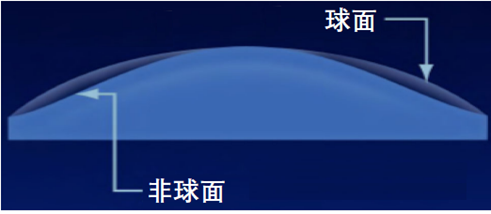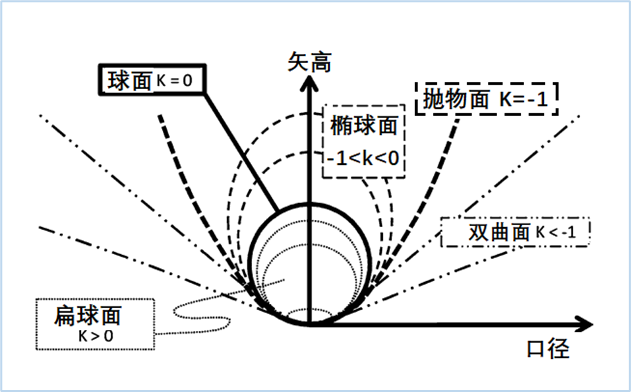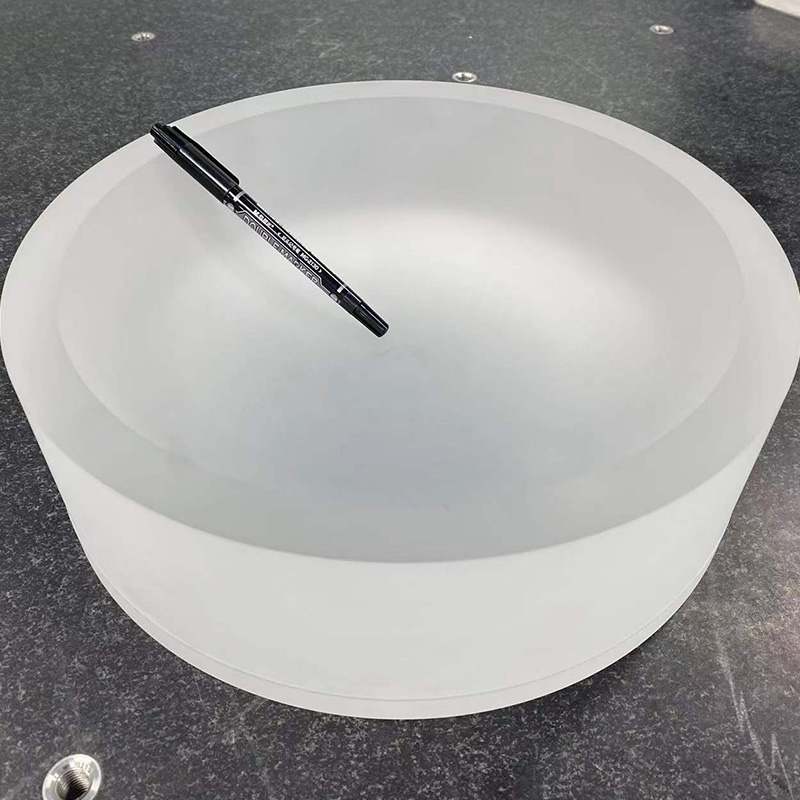Characteristics and Applications of Aspherical Optical Components
The curvature of an aspheric surface varies continuously. Based on this characteristic, aspheric optics can better correct spherical aberration in optical systems. They also exhibit excellent performance in correcting other aberrations such as coma, field curvature, and distortion. Therefore, a single aspheric lens can be used instead of multiple spherical lens in practical applications.
Characteristics
Unlike traditional spherical elements, aspheric surfaces have more parameters to describe the non-spherical surface. For a spherical surface, the curvature radius is the only surface parameter, while aspherical surfaces have more parameters. The expression of aspheric surface is shown below:

In the above equation, r is the radial distance between a point on the aspherical surface and the aspherical optical axis, z(r) is the sag at that distance. c is the vertex curvature of the aspherical surface, and its reciprocal is the vertex curvature radius. k is called the conic constant, and its value is -e2, where e is the eccentricity in geometry, a4, a6, a8... an are coefficients corresponding to high-order terms of the aspherical surface. From the aspherical equation above, we can see that the multiple parameters of a aspherical surface provide flexible degrees of freedom for aspherical design.
In comparison to a spherical surface, the profile differences in the sagittal direction are as follows:

As shown in the above figure, unlike a spherical surface with a single curvature, the curvature of a aspherical surface changes continuously. Based on this characteristic, aspherical elements can better correct spherical aberrations in optical systems, and they also perform excellently in correcting other aberrations such as coma, field curvature, and distortion. Therefore, in practice, a single aspherical lens can be used in place of multiple spherical lens, making the entire optical system more compact and helping to reduce the overall weight of the lens.
Applications
Aspherical optical mirrors are used in a wide range of applications across various industries. Some of the common application fields of aspherical mirrors and lens include:
1. Imaging and Photography: Aspherical lens and mirrors are often used in camera lens, microscopes, astronomical telescopes, and other imaging systems to improve image quality, reduce aberrations, and increase resolution.
2. Laser Systems: Aspherical lens and mirrors are used in laser systems to shape and focus laser beams, enabling precise control of beam shape and alignment.
3. Semiconductor Manufacturing: Aspherical lens and mirrors are used in lithography systems for semiconductor manufacturing, where they play a critical role in focusing and shaping the laser beams used to pattern semiconductor wafers.
4. Medical Devices: Aspherical lens are used in medical devices such as endoscopes, surgical microscopes, and ophthalmic instruments to provide high-quality imaging and precise focusing capabilities.
5. Virtual Reality and Augmented Reality: Aspherical lens are used in VR and AR headsets to improve optical performance, reduce distortion, and increase the field of view for a more immersive user experience.
6. Automotive Industry: Aspherical mirrors and lens are used in automotive applications such as headlight systems, rearview mirrors, and driver assistance systems to improve visibility, reduce blind spots, and enhance safety.
7. Aerospace and Defense: Aspherical mirrors and lens are used in aircraft, satellites, and military systems for applications such as surveillance, targeting, and remote sensing, where high-performance optics are essential.
8. Industrial Inspection and Metrology: Aspherical lens are used in machine vision systems, metrology tools, and inspection equipment to achieve precise measurements, high-resolution imaging, and accurate defect detection.
Overall, the versatility and performance benefits of aspherical optical elements make them widely used in a diverse range of applications where high-quality optics are required.
Quadratic surface
In practice, the most widely used type of aspherical surface is the quadratic surface, which contains at most quadratic terms and does not have higher-order components. Depending on the range of values of the conic constant k, quadratic aspherical surfaces can be categorized into ellipsoidal surfaces, parabolic surfaces, hyperbolic surfaces, and other surface types as shown in the figure above.

In the above figure, the following relationships exist:
- When the conic constant k > 0, the aspherical surface is ellipsoidal.
- When k = 0, it is a special case, which is the common spherical surface.
- When -1 < k < 0, the aspherical surface is parabolic.
- When k = -1, the aspherical surface is hyperbolic.
- When k < -1, the aspherical surface is hyperbolic.
In reflective telescopic systems, quadratic surfaces are commonly used as primary and secondary mirrors to achieve long-distance observations. Common examples include the classic Cassegrain optical system (with a parabolic primary mirror and a hyperbolic secondary mirror) and the RC system (both primary and secondary mirrors are hyperbolic).

MG Optics manufactures high precision Optical Aspheric Mirrors and lens, from 50 mm to 2000mm, materials including optical glass, SiC and Al RSA6061.Make-to-print manufacturing, 1/100 RMS or better.
Send your drawings, the quotation will be provided.
Contact us: info@mirrorganize.com